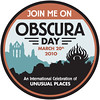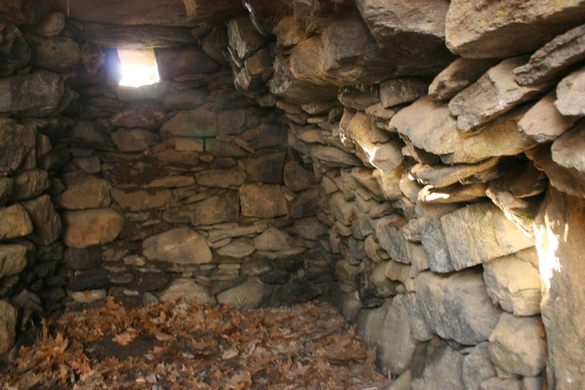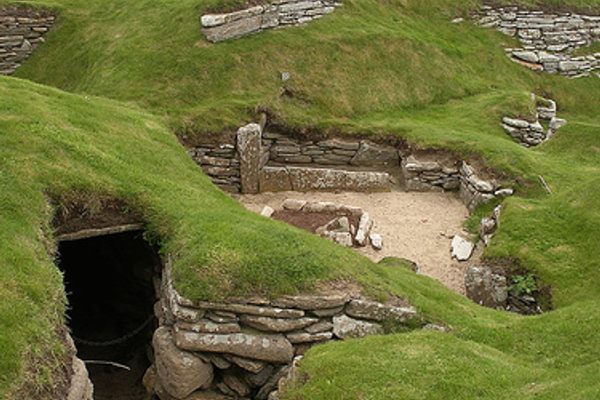Gungywamp in Groton, Connecticut is the kind of site that can drive archaeologists crazy.
It’s a very messy story. The site, located in the Connecticut woods less than an hour away from New Haven, consists of multiple stone chambers, rings of stones, piles of rock, Native American artifacts, mysterious etchings, lithic artifacts, Colonial artifacts, and hundreds—perhaps thousands—of years of various settlers adopting and rearranging the site. It’s difficult to tell where one historical period ends and another begins.
The site attracts what might be called archaeological conspiracy theories. Among the most popular of these theories (one that crops up at multiple stone sites in the Northeast, like New Hampshire’s Mystery Hill) is that the site is a pre-Colombian settlement built by 6th-century Celtic Christian monks who escaped Ireland to avoid Norse aggression.
While it is easy to dismiss this theory, the confirmation of pre-Columbian Norse contact in Newfoundland, and the suggestion that Polynesians may have had contact in South America make it difficult for some to dismiss out of hand. No findings confirming the theory have ever been found by any credible linguists, epigraphers, or archaeologists, making it still a fringe theory at best.
Even less credible theories involving aliens, some unknown group of ancient peoples, and energy vortexes (yes, really) also surround the site. Frustratingly for some tour guides, the site exhibits occasional spikes in electromagnetic activity on a magnetometer. This is believed by some geologists to be the result of the composition of quartz, granite and magnetite rocks, but that does little to dissuade those who want to believe Gungywamp is a UFO-influenced energy vortex.
What has officially been found at Gungywamp is no less confusing or mysterious. A lithic stone pounding tool found there dates to at least 1500 B.C., which is pre-tribal Native American. The site certainly has plenty of indigenous artifacts including arrowheads, stone flakes, and pottery fragments. The Native American inhabitants may also be responsible for the stone circles, which some believe are astronomical tools and which others believe are colonial mill or hide tanning areas.
However, it is the multiple stone chambers that get people the most excited. Thought by most to be root cellars built by colonial settlers, they have some strange properties, including one that’s designed to line up with the equinoxes, so that light shines though a small window. This seems not to fit with the work of colonial settlers. Prominent 30-foot rock ledges and an eagle petroglyph only provide further mystery and confusion to the site.
Whether constructed by Colonial-era European settlers, slaves in colonial times, by Native Americans such as the Pequot or Mohegan tribes, or even (however unlikely) by Irish Monks, the site will no doubt provide plenty of work, and frustration, to archeologists for many years to come.
 We explored Gungywamp on Obscura Day - March 20th, 2010. Photos, stories and more here
We explored Gungywamp on Obscura Day - March 20th, 2010. Photos, stories and more here
Know Before You Go
The site is half located on Ct state property and half on private land. Signs on the site for both the private sections and public lands say no trespassing, that cameras are in use and they will prosecute. Access to Gungywamp is still available. Both the state and private owners have allowed the Denison Pequotsepos Nature Center to conduct tours of Gungywamp as they are the "caretakers" of the site. There is no parking at the entrance to Gungywamp and no signs posted that it is there, however, you can park at an abandoned church parking lot. (Shepherd of the Sea Chapel in Groton, Ct) It is about a 10/15 minute walk from the parking lot to the entrance to the the hiking trail. If you want to take a tour of Gungywamp go to site.http://dpnc.org/gungywamp-structures/. Tours are small group tours and you should pay on their site to ensure a spot in the tour, especially if you go for an equinox! Never fear if you want to go on one of those special times to see the solar alignments. They conduct special tours on equinoxes so you can see the alignments! The tours are $15 per adult and the money goes to support the Denison Pequotsepos Nature Center. Be warned Gungywamp is surrounded on 2 sides by swamps. There are a lot of mosquitoes. Wear bug spray! Wear sturdy shoes. The trails are uneven, rocky, mucky, and often muddy in the swampy parts.




















Follow us on Twitter to get the latest on the world's hidden wonders.
Like us on Facebook to get the latest on the world's hidden wonders.
Follow us on Twitter Like us on Facebook